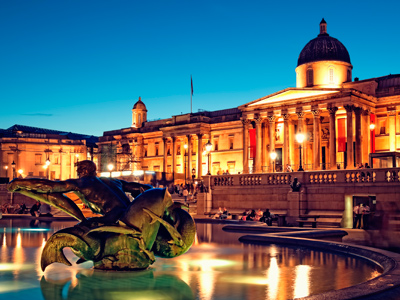
Galleries - Metropolitan and National Gallery
The Metropolitan Museum of Art is the most visited Art Museum in the USA, and the National Gallery is the second most popular in the UK. Between them these two make up the third and fourth most visited art museums in the world.
The Metropolitan Museum of Art can be found in New York. It has in its collection over 2 million works of art which are split into 17 departments such as drawings and prints, medieval art, photographs and musical instruments.
The museum was founded in 1870 by American businessmen and financiers, along with artists who wished to bring art to the people. They certainly succeeded in their goal as the museum now houses art dating from ancient Egypt, alongside works by the Renaissance masters and a large collection of modern art.
The National Gallery, in Trafalgar Square, London, is home to more than 2,300 works which belong to the British people and are free to view. It was founded in 1824 when the British Government bought 38 paintings from the estate of insurance broker and art collector John Julius Angerstein.
The National Gallery's collection is small compared to other art museums, mainly because the majority of its collection (two thirds) has come from donations rather than being purchased. Despite this it contains works from all periods in western art from the 13th century to the dawn of the 20th and had over 6 million visitors through its doors in 2013.
His unique style was way ahead of its time and he is seen as the forerunner of not only expressionism but also of Cubism
Cole was born in Bolton, Lancashire and emigrated to the USA in 1818 where he founded the Hudson River School artistic movement
The identity of the subject is uncertain. It could well be a self portrait (and several clues support the idea) but there is no direct evidence
This painting is done in the style of a classical Roman sculpted bust. Bellini was renowned for this type of work and, partly because of him, this style of portrait became very popular in Venice
The seven acts of charity are: to feed the hungry, to give drink to the thirsty, to clothe the naked, to harbour the harbourless, to visit the sick, to visit the imprisoned, and to bury the dead. This painting represents the act of visiting the sick
Ready for more?
not all...
quizzers. Try to win a coveted spot on our Hall of Fame Page.


















Caravaggio included himself in this portrait. He is the second boy from the right